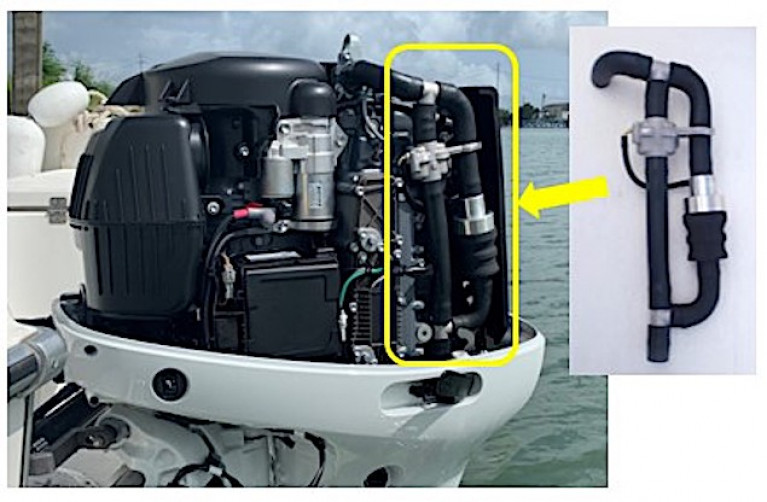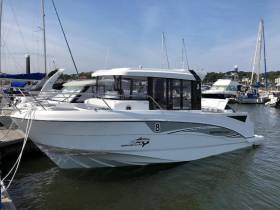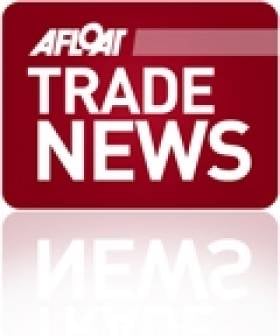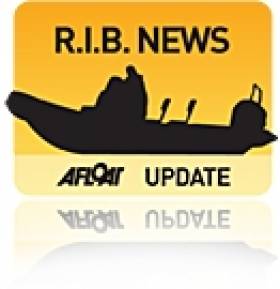Displaying items by tag: Suzuki
Suzuki Introduces a Trio of New Outboard Models for 2022
Suzuki is introducing three new outboard engine models to its range in the form of the DF140B, DF115B and the DF100C. These new outboards are mechanically controlled and replace the out-going DF140A, DF115A and DF100B models.
These new additions to the Suzuki outboard range provide an upgraded compression ratio of 10.6:1 for better top speed and quicker acceleration as well as increased fuel economy through improved thermal efficiency.
These new outboards also include a 40-amp alternator that delivers improved output and battery charging at low idle speeds. A redesigned cowling incorporates a new air intake structure with improved water separation and a silencer-resonator system to provide a more pleasant boating experience at all engine speeds. The new design also gives a smoother and more dynamic aesthetic appeal.
 Suzuki DF115B
Suzuki DF115B
To make routine maintenance easier, Suzuki has made it possible to replace the oil filter simply by removing the upper engine cover. To further increase ease of maintenance, the hole for the oil level gauge has been widened to 15mm which enables the use of a larger oil change hose. In addition, a new oil spill catcher on the filter mount prevents spillages and a new easy access water detection fuel filter helps protect the engine against contaminated fuel.
The DF140B, DF115B and DF100C provide heavy-duty performance and long-lasting durability in a lightweight, mechanically controlled package and are also the first four-stroke outboards to utilise an oil cooler, ensuring that all that horsepower is available in any conditions.
 Suzuki DF100C
Suzuki DF100C
Mark Beeley, Head of Marine & ATV for Suzuki GB said, “The new DF140B, DF115B and DF100C models are the latest in a long line of our innovative, lightweight and fuel-efficient four-stroke outboards that give customers the power, performance and reassurance that they need for a wide variety of boating activities.”
The Suzuki outboard engine range is available in Ireland from selected handlers including Viking Marine and OS Marine
Suzuki On Show at RYA Online Dinghy Show
Visitors to the Suzuki booth at this weekend's RYA online dinghy show will find out more about why this brand of outboard engine is proving so popular for use on club safety boats, coaching/chase boats and, of course, leisure craft – including as auxiliary power for larger cruising dinghies and sailboats.
Suzuki will be 'exhibiting' its entire range of four-stroke outboards, which spans from the lightweight and portable DF2.5 to the awesome power of the award-winning DF350A.
Viking Marine and O'Sullivan's Marine are among the Suzuki outboard range dealers in Ireland.
Suzuki Motor Corporation is continually seeking to develop innovative solutions to environmental issues associated with the manufacturing of automotive and marine products and has now developed the world’s first* Micro-Plastic Collecting Device for installation on outboard motors.
Marine plastic waste is a growing environmental issue with a huge amount of mismanaged waste flowing into the oceans each year. The waste then breaks down into micro-plastics in the ocean’s ecosystem, significantly impacting marine life.
To help tackle this issue, Suzuki has focused on the structure of the outboard motor, which pumps up tons of seawater to cool the engine and then returns the water to the ocean.
 Actual micro-plastic waste collected during the monitoring research
Actual micro-plastic waste collected during the monitoring research
Suzuki has developed a device which collects micro-plastic waste from the returning water. Through this device, micro-plastic waste can be collected just by running the engine.
The device can be easily installed to the return hose and does not affect the engine performance since it only utilizes the returning water that has already been used to cool the engine.
 Micro-Plastic collecting device
Micro-Plastic collecting device
During monitoring research conducted in Japan, a substantial amount of micro-plastic waste was found within the substances collected in the filter. Research is also currently being conducted internationally with further improvements scheduled for the device going forward.
Suzuki plans to introduce the device as optional from 2021 and incorporate it as a standard feature in the future.
Mark Beeley, Head of Marine & ATV for Suzuki GB, said, “This ground-breaking development is part of Suzuki’s continuing determination to devise innovative solutions that mitigate the serious impact of plastic waste on our natural environment. It marks the first time in marine industry history that an outboard motor cooling system has been utilized to extract micro-plastics from the seawater.”
Off the back of what they declare was their best ever year for sales of Beneteau outboard boats, Irish brokers BJ Marine were recently in attendance at the French builder’s global dealer conference in Valencia to get a special look at its fully Suzuki-powered range.
General manager James Kirwan told Afloat.ie: “The growth of the range of outboard boats inspired us to invest in our first ever Irish Barracuda Tour qualifier, an event that also supported by Viking Marine, our Suzuki partner in Ireland.”
Beneteau’s outboard range covers the Antares, Barracuda and Flyer models, from six metres up to the new Antares 11 which will be unveiled this winter.
“In particular, the Antares and Barracuda ranges offer the perfect versatility for use in Irish waters where rapidly changing weather and sea states are regular events,” Kirwan said.
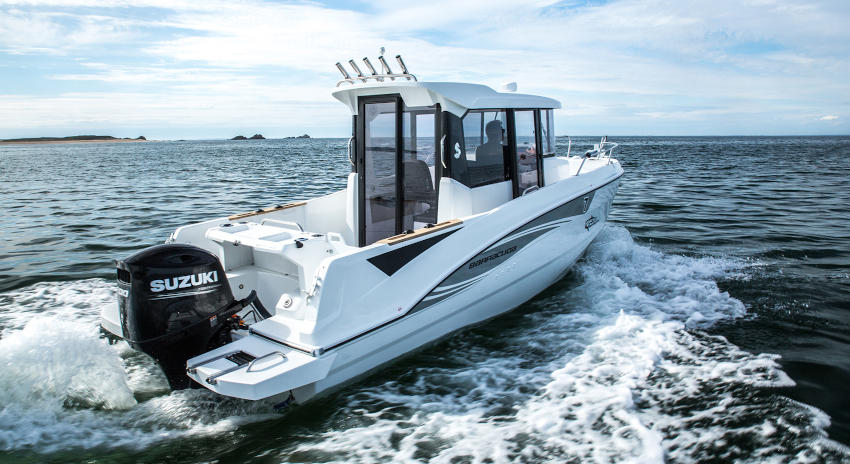 Beneteau Barracuda with a Suzuki DF200AP outboard
Beneteau Barracuda with a Suzuki DF200AP outboard
Suzuki has been the outboard supplier of choice for Beneteau since 2013 and the French builder says its partnership continues to go from strength to strength.
Five Suzuki-powered boats were on the water in Valencia ready for dealers to test — including the new Flyer 10 and 7.
“We are very proud to work with and partner Beneteau,” said Daisuke Kawatari, general manager for Suzuki Motor Corporation’s European liaison office.
“Our partnership is a strong one and we are looking forward to taking it to the next level in order to continue to deliver the ultimate boat/engine packages for our customers.”
Suzuki Aims to Be Number One Outboard Engine Brand In Ireland in Next Three Years
Suzuki says it has achieved the highest market share in the four stroke outboard sector in Europe last year. It's a proud boast for the engine manufacturer that is also mirrored at home with growing Irish sales.
Sales of Suzuki marine engines in Ireland has been growing year on year for the last six years, according to Suzuki Ireland's Declan Maguire. 'We are not surprised that we are the number one choice for boaters across Europe, as our reliability and fuel efficiency records speak for themselves'.
Maguire says 'with our sustained growth in Ireland, combined with our competitive pricing, we hope to be the number one choice for Irish boaters in the next three years'
From the lightweight and portable DF2.5 to the award-winning power of the DF300AP, Suzuki says they have an outboard for every purpose and to match any transom, so customers really do have a great choice.
The manufacturer launched several new models this year, the most recent being the DF200AP which is the first outboard in the world to feature a keyless start system.
George Cheeseman, Sales & Marketing Manager for Suzuki GB’s Marine Division, said, “We are incredibly proud of this achievement and we congratulate our colleagues at the factory for producing such fantastic outboard motors. We, as a team, are driven to provide our customers with the ultimate in outboard power and with more and more people choosing Suzuki, the team’s tireless efforts really are paying off.” He concludes, “We are looking forward to the remainder of this season and pushing forward with even more exciting products and initiatives.”
Suzuki Marine are exhibiting at the Southampton Boat Show from this morning to the 20th September.
Suzuki’s Four stroke market share in 2014:
Sales results: 44,613
Market share: 28.5%
Source: ICOMMIA
Young south coast boater Adam Brennan is rapidly building a strong reputation for himself within the Irish and UK boating communities.
At just 17, he is still at boarding school in Ireland but has already secured himself a Super Yacht Cadetship with the UK Sailing Association when he leaves school. Alongside his academic career, Adam also manages 12 boats for customers around Kerry during the holidays and advises them on their boating requirements, with Suzuki being the outboard of choice for both his own boats and his recommendations to customers.
In addition to all of this Adam is also the lead organiser of the 'Bull run for fun' which is a 74–nautical mile cruise in company from Kenmare Bay in Ireland to the iconic Bull Rock in the Atlantic. Adam founded this event when he was just 12 years of age and since then it has grown to be one of Ireland's top power–boating events.
Not content with forging a career in the marine industry and organising his own events, Adam is also restoring a Delta Dash 5.5m RIB, which he is re-powering with a Suzuki DF140A outboard motor, which has been generously donated by Suzuki GB. The DF140A benefits from Suzuki's Lean Burn Fuel Control system and will deliver all the power and performance that Adam's RIB needs plus class-leading fuel efficiency.
Whilst Adam is doing much of the restoration work to the RIB himself, he is calling upon the expertise of Suzuki Dealer, Marine Motors in Cork to rig the outboard.
Suzuki's donation of the outboard to Adam is just one of the ways in which it will be participating in the Bull Run for Fun this year, as part of the company's celebrations to mark the 50th Anniversary of its very first outboard motor, the D55, which was launched in 1965.
George Cheeseman, Sales & Marketing Manager for Suzuki GB's Marine Division, said, "When we heard about Adam's activities and superb credentials for someone so young, we were keen to support him. He is incredibly enthusiastic and as such he is a fantastic ambassador for our range of ultimate four stroke outboards."
#TradeNews - Suzuki has unveiled its latest lightweight and fuel-efficient outboard engine model in the new four-cylinder DF200A.
The new outboard promises the performance one would expect only from a V6 engine, but from just four cylinders, making it the lightest in its class - like the recently released DF30A and DF25A before it.
Other features include a direct air intake and 'Variable Valve Timing' for higher performance and thermal efficiency, a large 'Big Block' displacement and higher compression ratio for better acceleration and low-end torque, improved sensors for monitoring and controlling internal engine operation, and 'Lean Burn Control Technology' for much improved fuel economy.
Perhaps most importantly, the new DF200A hits the scales at just 225kg, more than 12% less than the current V6 DF200 model.
And all that's aside from the sleek styling that boaters have come to expect from Suzuki.
But for those who want even better tech, the new DF200AP tops the standard model's specs as the first 200HP to market with Suzuki Protection Control for drive-by-wire, and Suzuki Selective Rotation whereby dealers can set up engines in either standard or counter rotation thanks to the specially designed gearing and electronic shift controls.
The DF200AP also features a keyless ignition system, using a coded keyfob that adds an invaluable extra level of protection.
Suzuki's DF200A will be available from dealers later this year, with the DF200AP to follow in early 2015.
New Suzuki Outboard Motors Punch Above Their Weight
#TradeNews - Motor boaters looking for some featherweight power will want to consider two new Suzuki outboard models that punch well above their weight.
At just 62kg each, the DF30A and DF25A are the lightest in their respective classes. But despite their lack of heft, Suzuki haven't scrimped on the innards.
Both models boast a new battery-less electronic fuel injection system for quicker starts, smoother operation and better acceleration.
Other features include roller rocker arms, an offset crankshaft, improved intake and engine cover ventilation and up to 15% increased fuel efficiency.
Production begins shortly, with the first models expected in dealerships by May this year - just in time for summer!
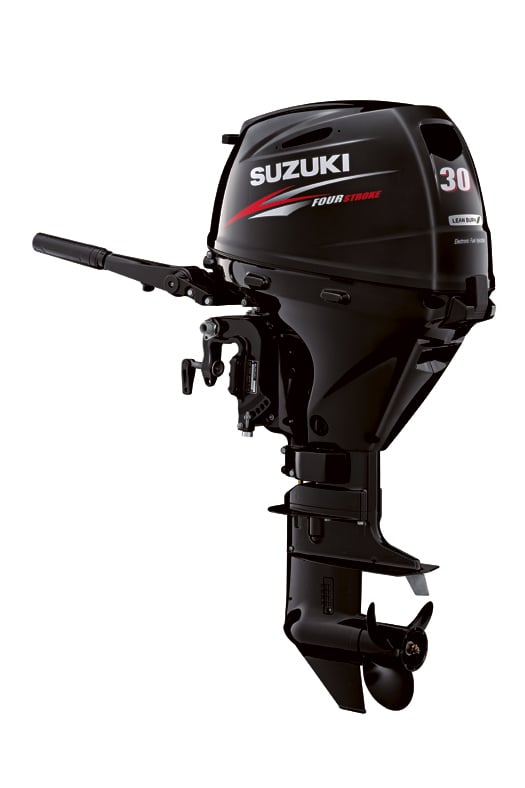
Suzuki Shows off new Outboard Engine Joystick Control
#joystick – Suzuki Motor Corporation has announced that it has a new Joystick Control System in development. The announcement was made earlier this month at the 2013 Japan International Boat Show in Yokohama.
The new joystick system is meant to integrate seamlessly with Suzuki's proprietary drive-by-wire system that is available on the Suzuki DF250AP and flagship DF300AP outboard engine models.
During the Japan International Boat Show, the company showed a prototype joystick control as well as concept drawings of the system and its components.(See above)
According to Suzuki, this new system will provide increased confidence to skippers as they manoeuvre their boats in close quarters and will increase the appeal of boating to a 'younger, more tech-savvy demographic'.
Boats to be Sold in Cork Liquidation Sale
Fancy a pre-season boat bargain? It may well be on offer later this month at a 'liquidation sale of boats' due to take place in County Cork with a selection of unused and used power boats. The sale is by order of Mr. Barry Donohue, KPMG, Liquidator, HM Yachts Ltd (In Voluntary Liquidation).
The boats on offer include three unused Jeanneau motoboats inlcuding the popular Merry Fisher Legend. The vessel comes with Suzuki 50HP Four Stroke Engine and road trailer, ready for the season!
The sale will take place at 12 noon on Tuesday 29 March 2011. Viewing is from 10am - 4pm Monday 28 March 2011 or by appointment. The sale takes place at the Michael Murphy Yard, Mission Hill, Kinsale, Co. Cork. (Across from Bandon Co-Op)

For sale: The Merry Fisher Legenda 585 Motor Boat
There are ten lots (including a van) but for the boats for sale include:
Unused Jeanneau Cap Camarat 715wa Motor Boat with a Hallmark Double Axle Trailer with Winch and Rollers, White / Blue.
Unused Jeanneau Cap Camarat 515 Style Motor Boat with a Suzuki 50HP Four Stroke Engine, Model DF50, Plus a Hallmark Single Axle Trailer with Winch and Rollers, White / Beige.
Unused Jeanneau Merry Fisher Legenda 585 Motor Boat with Enclosed Cabin with an Indspension Roller Coaster Single Axel Trailer with Winch and Rollers, White / Blue.
2006 Maxum 2400 SC3 26ft Motor Boat with 300Hp Petrol Inboard Engine with Double Axle Trailer, White / Blue.
2005 O'Sullivans Marine 710 23ft Fishing Boat with Cabin, Yanmar 27hp Diesel Inboard Engine, White / Blue, Name Mary-Linda.
For further details, please contact E-Auctions T: +353 45 883 554. More HERE.


























